I was lucky enough to be invited to help teach my pal Janet Abrams’ new design program, Architecture + Design Summer Academy at the University of New Mexico in Albuquerque last week. I flew(!) in on Sunday, spent a week with Janet and the amazing UNM professor Francisco Uviña helping to shepherd high school students through an intro to design, and learned a lot from both the teachers and the students over the course of an action-packed week. Here’s what happened.
Day 1: drawing & fermenting
The students (now on their second week of the program) had made it clear that they wanted to spend more time in hands-on drawing than they did with zooms and lectures, so we started the day with a collaborative drawing exercise. Half of the students sat in a ring facing outwards, the remaining half sat in a ring facing inwards, and each of the pairs of students had a piece of paper in between them. Each student on the outer ring got 60 seconds to draw the student in front of them in the inner ring. After a minute, each student on the outer ring moved to the right, but (this is the crucial part) the piece of paper stayed with the student on the inner ring. Another minute, the outer ring moved to the right, and the paper stayed where it was. This repeated until everyone in the outer ring had drawn everyone in the inner ring.
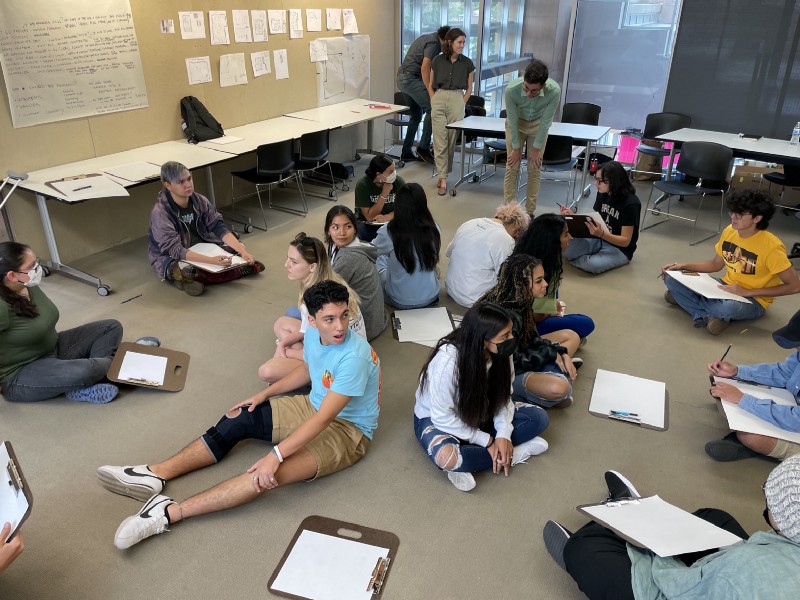
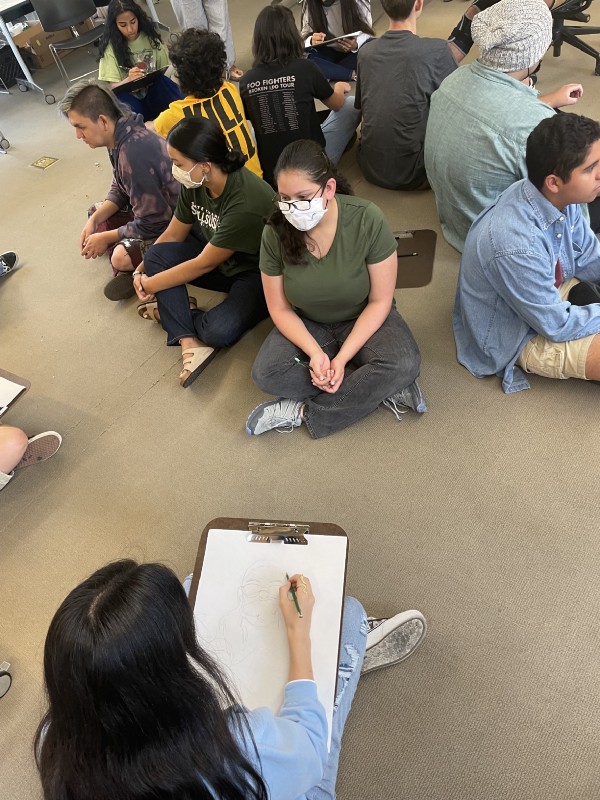
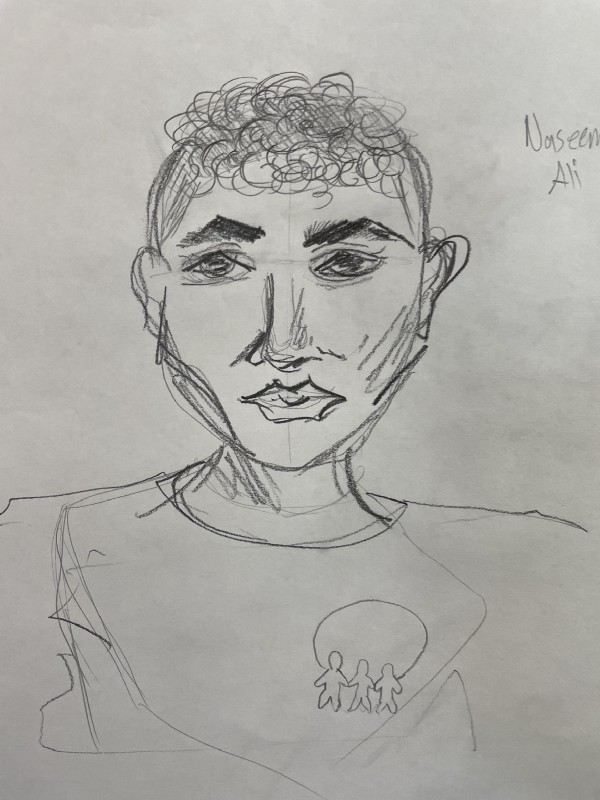
The point of all this, aside from the fun of it, is twofold: everybody gets to participate in every part of the drawing process from beginning to end, and we all got to have conversations about the specifics of each drawing in a very direct way, since everyone drew a piece of every drawing. This is an exercise that was taught to me at Josh Draper’s 30th birthday party 20(!) years ago by the Kaos Pilots, and I’ve wanted to do something like it ever since. The collaboration skills developed in this exercise would prove useful in some of the larger scale collaborative drawings we’d do later on in the week.
In the afternoon we pivoted to a different kind of design exercise: fermenting fruit! I’ve been using pandemic-induced isolation to explore the new flavors & textures of fermentation, initially inspired by the Noma Guide to Fermentation (a gift from my wife) and branching out into salt-preserved lemons, all different kinds of kombucha (hibiscus, mango, rose petals, and beet are a few of the labels on the jars bubbling on my fermentation shelf), all different kinds of kvass and ginger bugs, and on and on. There’s a whole world in there; it’s not for nothing that the same word, culture, is used to describe the entirety of the human project as well as the substance that kicks off fermentation. My co-instructor Francisco is an expert in historic preservation — in this context, known as ZERVING — and talked a lot about that during the week; this was a way to bring a different kind preservation into the conversation.
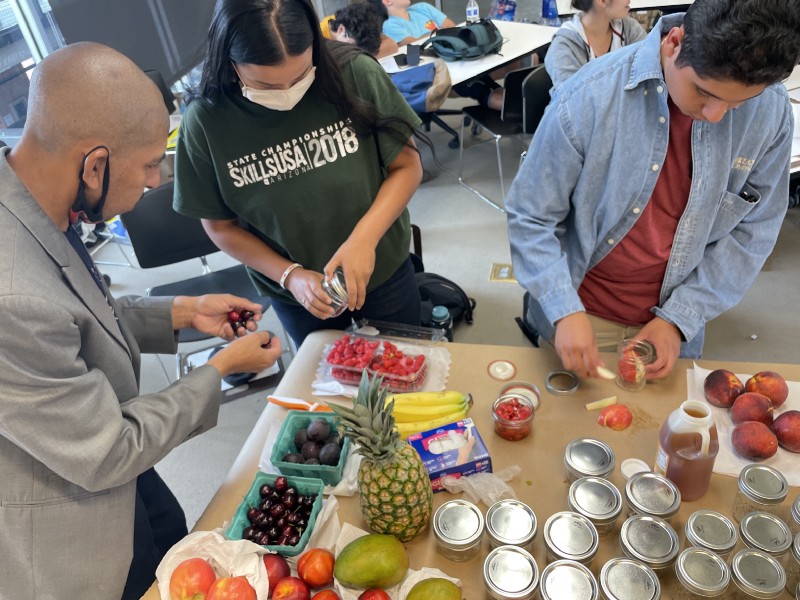
Honey left on its own will never go bad. There’s too much sugar in it. Honey was found, unspoiled, in King Tut’s tomb, and honey-fermented berries were still fresh after being left in tombs in the Caucasus for 4,300 years. It’s wild stuff. When you put fruit in it, the concentration of sugar goes down because the water from the fruit gets pulled into the honey. Then the natural yeasts and bacteria in the honey and the fruit can digest the sugar, and you get fermentation.
What I wasn’t prepared for was the range of combinations the students would go for. Usually, when I’m fermenting in honey, I’ll have one or maybe two kinds of fruit around and I’m preserving those. Janet and her TAs piled a huge table full of all kinds of different fruits; in the images above you can see figs, cherries, peaches, pineapple, apples, mango, bananas, peppers, apricots, just a dizzying array of tasty things and we encouraged the kids to just go for it. We wound up with some truly wild combinations: serrano peppers with pineapples, strawberries & bananas, cherries with ginger…in half an hour a group of teenagers just blew right past anything I’d imagined in two years of learning about this fascinating process. More on this later.
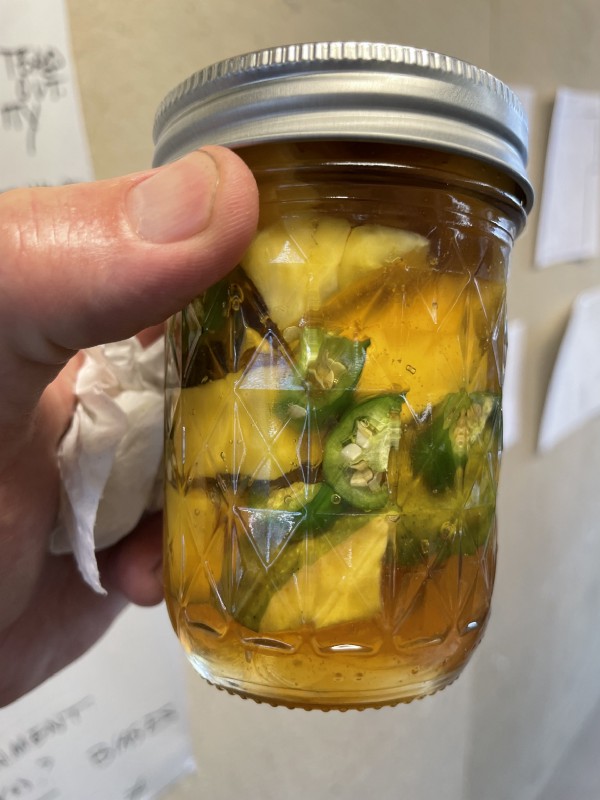
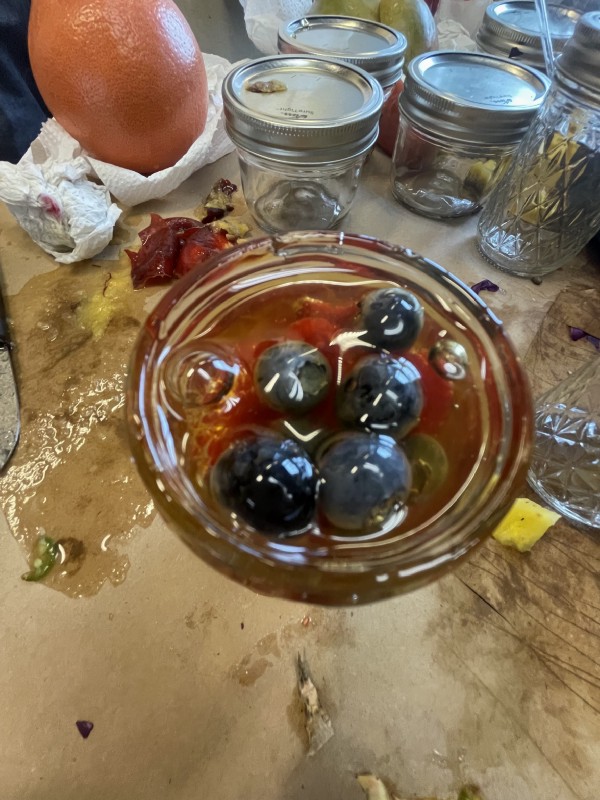
Wait what?
At this point you might be asking what business, exactly, a data visualizer & mapper from San Francisco has teaching collaborative drawing and honey fermentation with a preservationist to high school students, and what this all has to do with the practice of design. Part of what I’ve tried to do with Stamen is to make the case that we should consider the field of mapping and data visualization in the broadest possible terms; it makes no sense (to me) to think of it as a stepchild of computer science or as an endeavor with easily-defined edges. Lately I’ve been thinking that data visualization is inherently multidisciplinary; by the very nature of the act of making data visible we uncover, learn, discover, and create the possibilities for new kinds of understanding. We’re also inherently collaborative at Stamen; I have a saying that if one person can do it on their own, it’s probably not a project we would take on. Part of what I’m getting increasingly interested in is radical collaboration, radical multidisciplinarity, and seeing where that can take our work. So: everybody draws everybody, we pull water from fruit into honey and collaborate with bacteria and yeast over time, and we make maps of the previously invisible. Sounds like a good way to spend a week to me.
Day 2: visiting the Predock Center
We’d planned a trip to Santa Fe, but the weather intervened, and took a trip instead to the former studio of the architect Antoine Predock, now the Predock Center in Albuquerque. I’ll confess I hadn’t heard of Predock before this, but damn! what a career he’s had. He reminds me of Peter Beard a bit, a suave motorcycle-riding (and crashing) guy who just never stopped making beautiful things and along the way filled a building with beautiful objects and drawings.
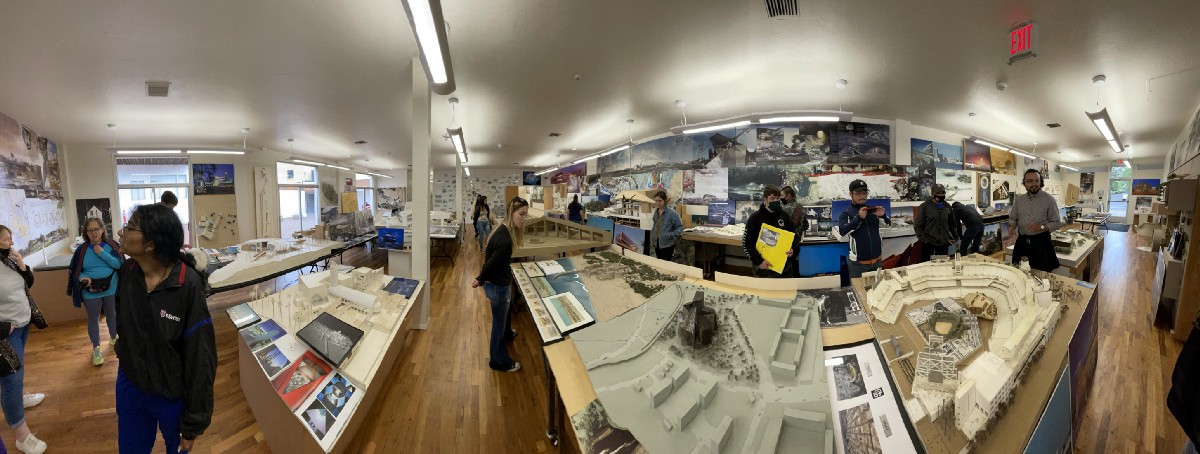
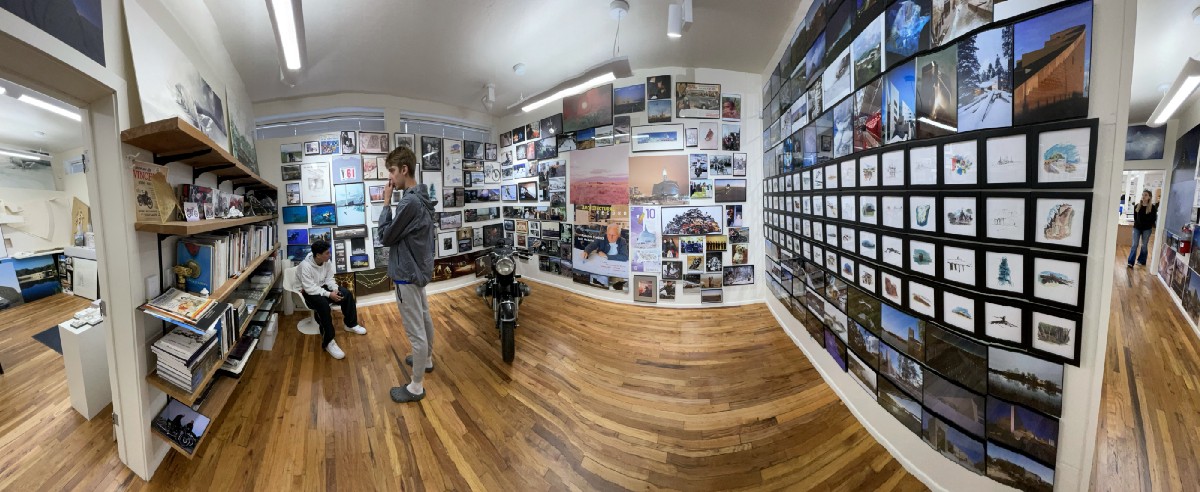
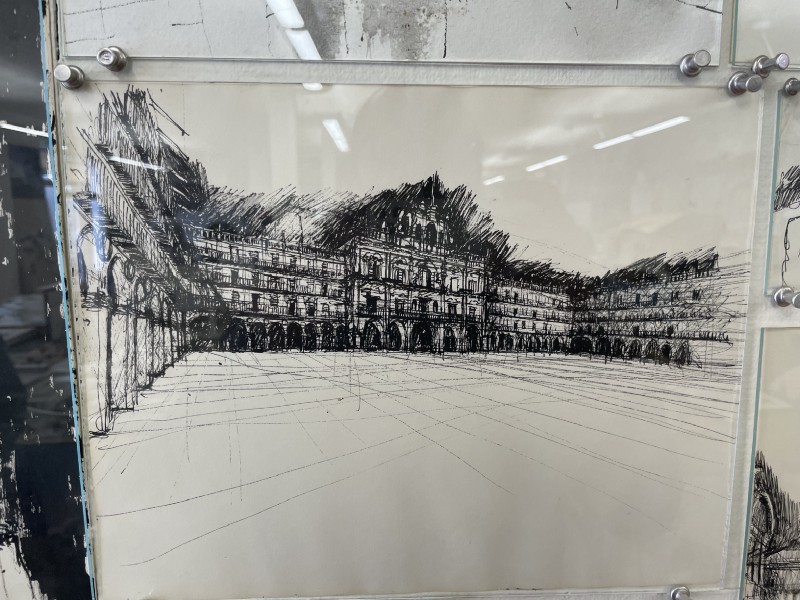
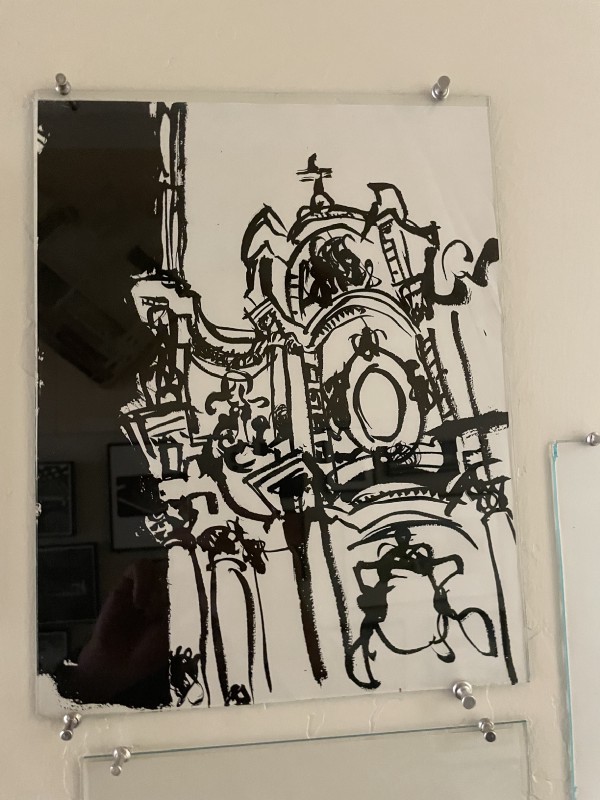
The finished models are cool, but what made the space truly wonderful was Predock’s sketches of beautiful architecture around the world: Rome, Milan, Sydney, the guy is a beauty machine! And the students got to see the Predock Center before the rest of the world; I don’t think they’ll forget the visit any time soon.
Day 3: Drawing in Santa Fe
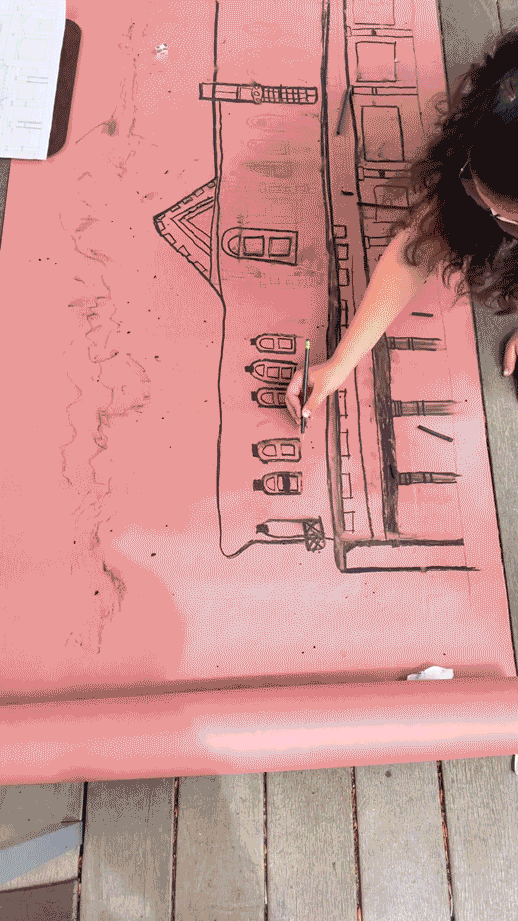
We took the train to Santa Fe the next morning, and quickly made our way to the central Plaza, a National Historic Landmark and a perfect example of colonial Spanish architecture.
We broke the students up into five drawing teams: one for each of the sides of the Plaza, and one for an overhead view of the central square. They made 11″x17″ drawings of their subject, and after an hour we all met up in the gazebo in the Plaza and made a fifty foot long collaborative drawing together; a riff on 12 Sunsets, our recent project with Ed Ruscha & the Getty.
Using charcoal & drawing big was really good for the students; the first day’s drawing exercise where they all drew each other was a really good way for them to start to get comfortable sharing authorship.
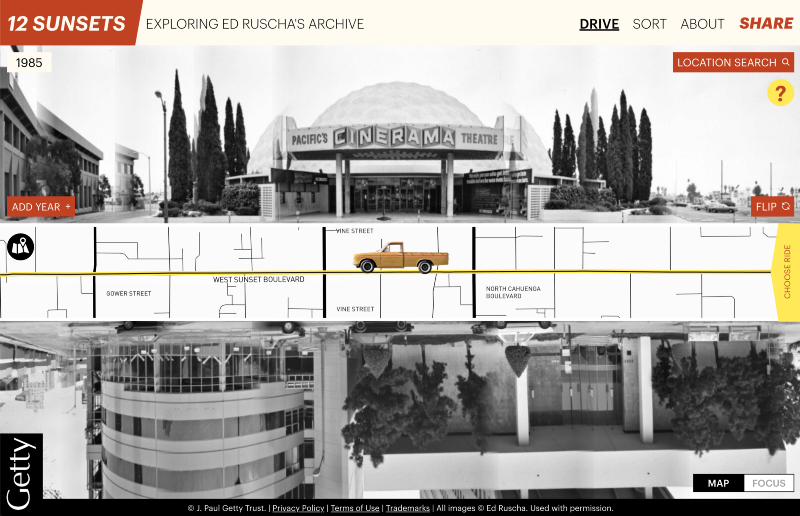
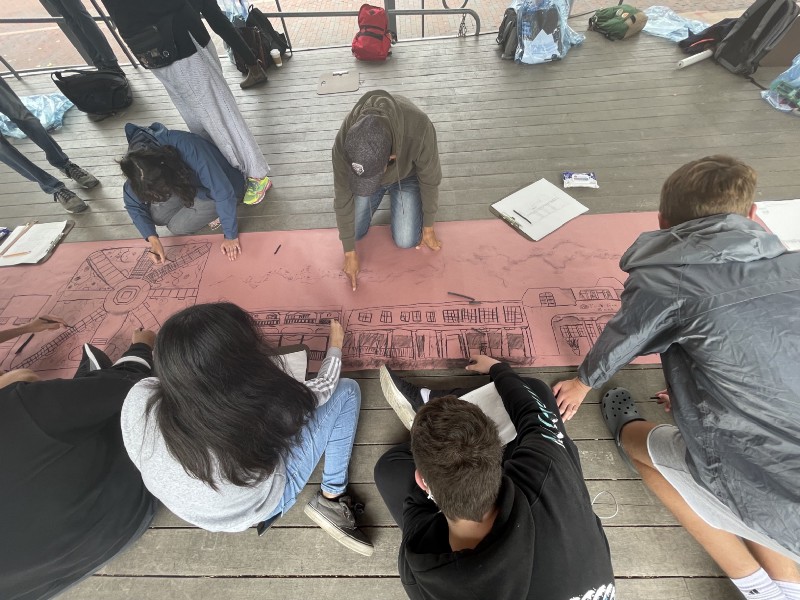
Day 4: more collaborative drawing, adobe & ferments
Thursday we hung the drawing in the school of architecture, a collaborative exercise in its own right (hanging a 50′ long paper drawing presents a significant challenge). Turns out the roll of white paper that we’d laid over the charcoal in order to keep it from rubbing off became a kind of inverse print of the original drawing. Further riffing on 12 Sunsets, we hung the white paper upside down, providing a kind of mirror image of the original drawings.
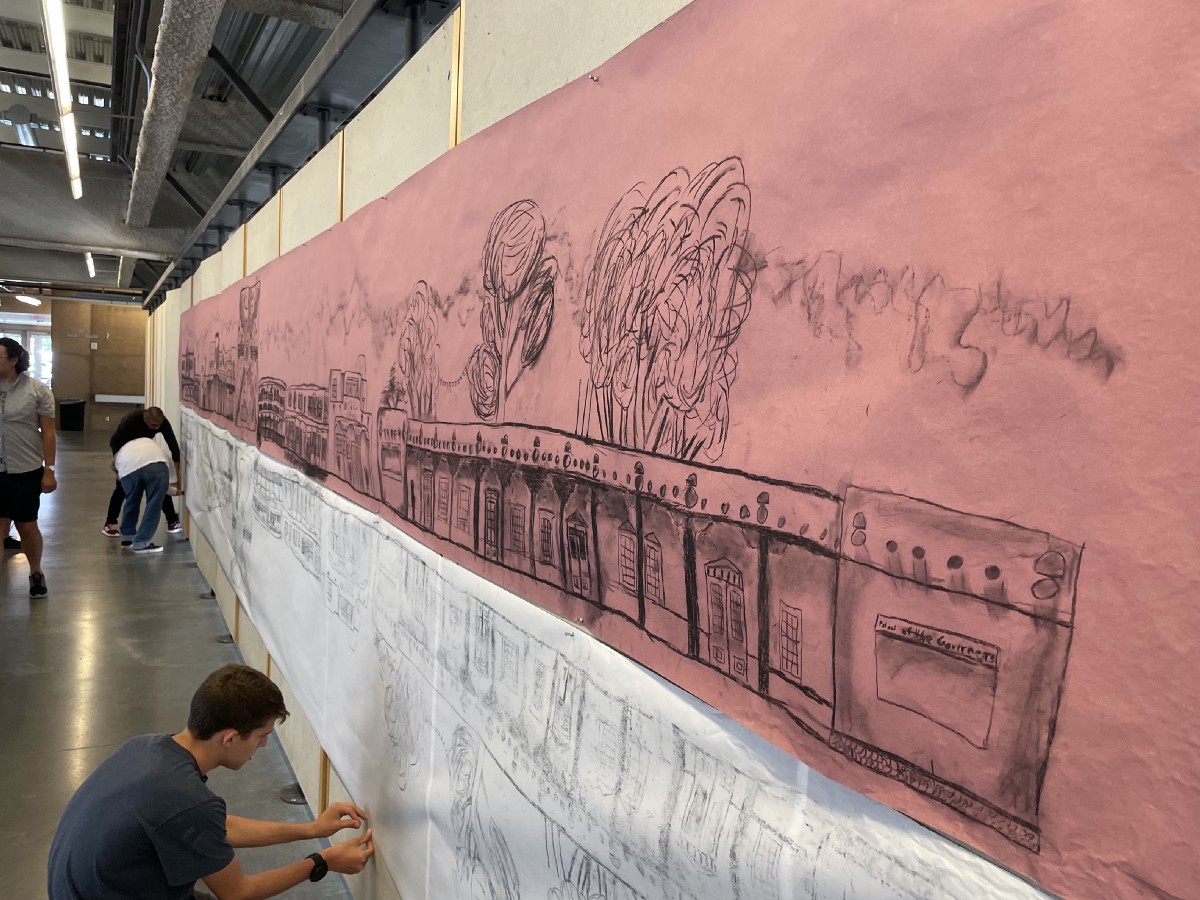
The next part was also a collaborative drawing; the students were tasked with considering what the Plaza and surrounding streets would look like through a fish eye lens from above. We spent the middle part of the day clambering over a pencil drawing that slowly started emerging , ably directed by Fransisco. No shoes allowed on the paper!
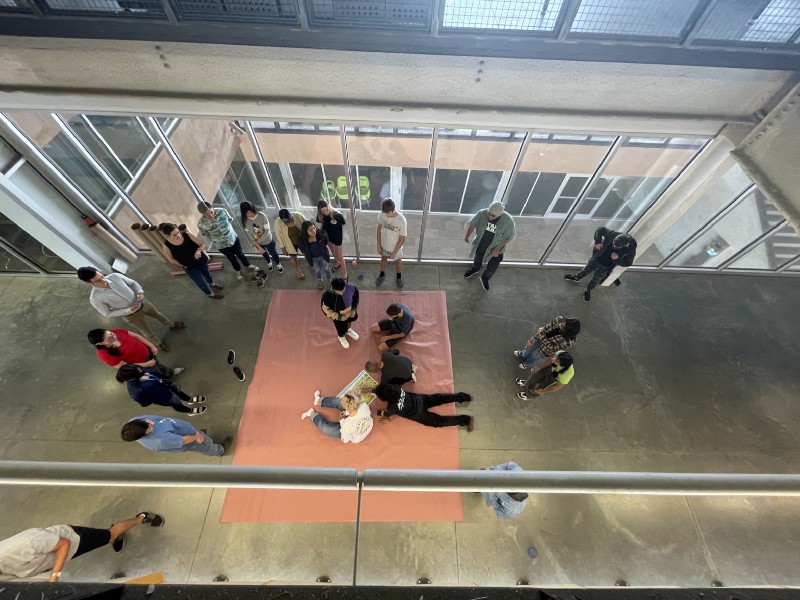
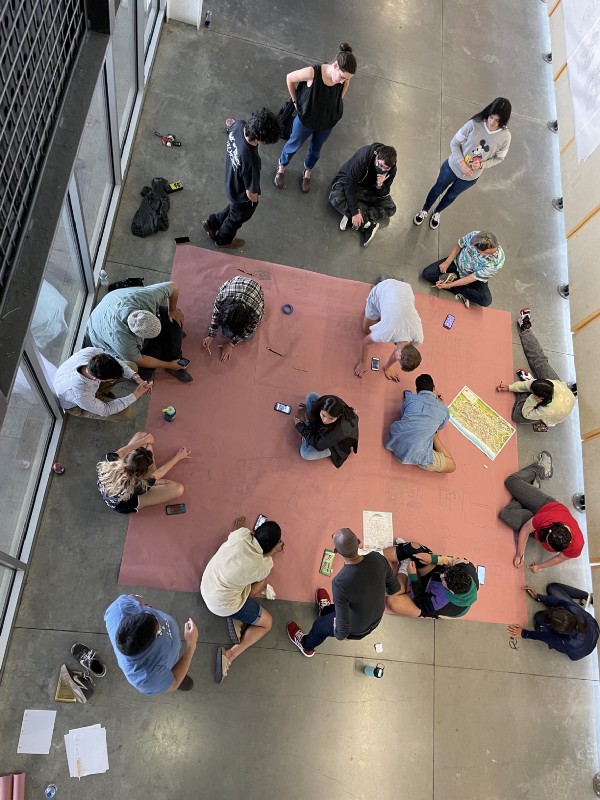
We also learned about adobe, which Francisco is an expert in. Here’s our leader Janet, learning about the form, shape and materiality of this substance (basically sand and rock mixed with water and dried), ubiquitous in New Mexico.
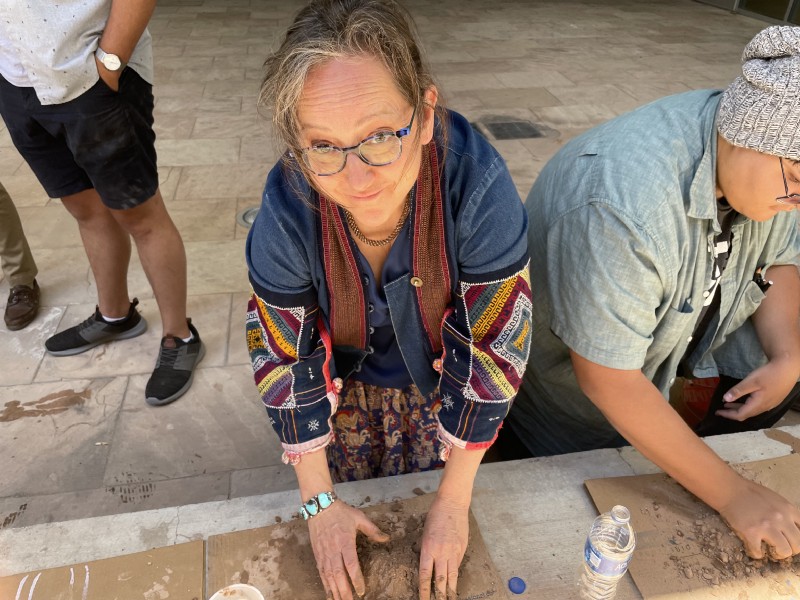
The day ended with us checking on our fermentation projects. Some of the jars, which were initially entirely full of fruit nestled in thick goopy honey, were now only half full of fruit and submerged in a watery nectar. The water from the fruits gets pulled into the honey, the fruit shrinks accordingly and starts to taste dry, like a wine.
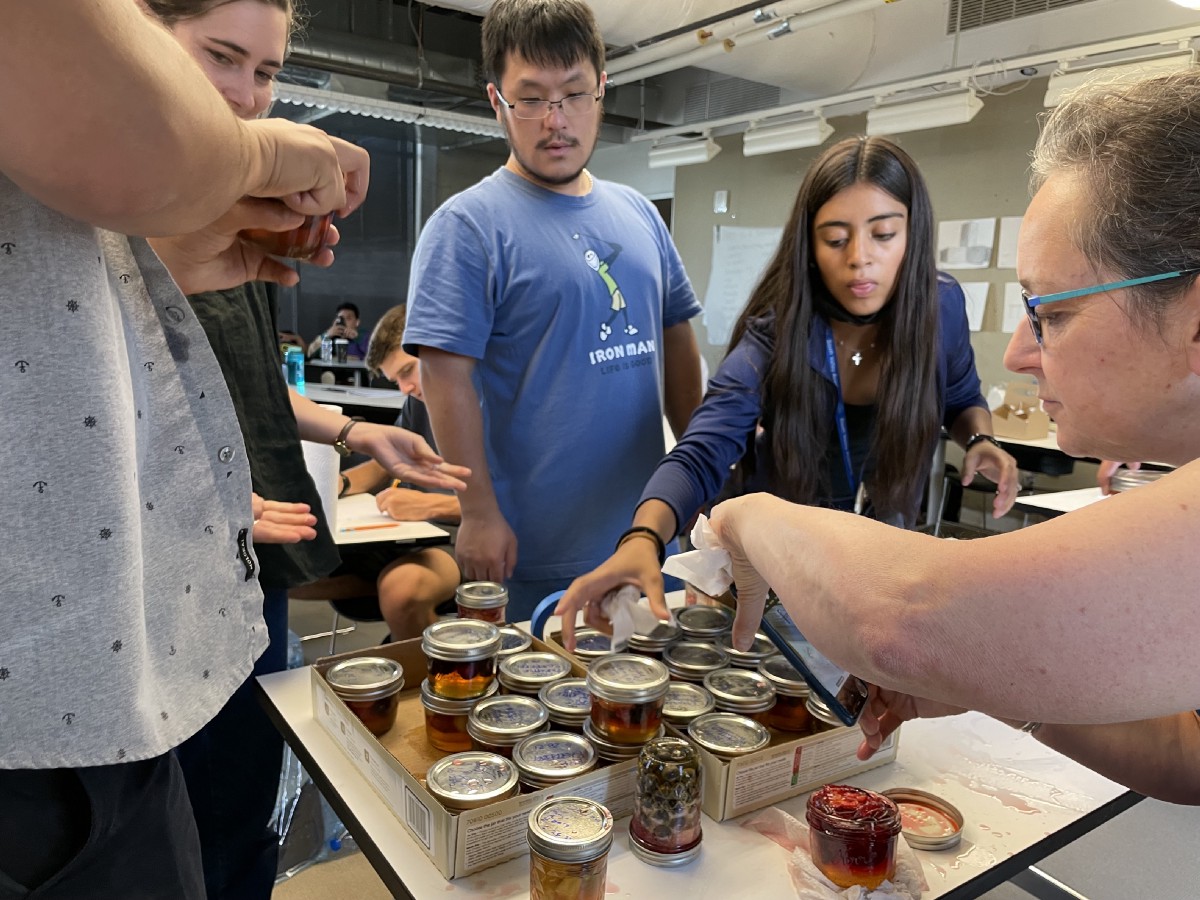
Each of the jars made a popping sound when opened; this is due to the carbon dioxide which is a waste product of the bacteria & yeast that are doing the fermentation. Honey got all over the students’ hands & the table; next time I’ll tell people to fill the jars 90% of the way instead of to the very top. Plums, cherries, apples, ginger, & pepper all came together in various combinations & proportions. The cherries and ginger were a marvel; mangoes & serrano peppers just burst out of the glass and fizzed sweetly on the tongue. A glorious and delicious mess!
One of the things that fascinates me most about fermentation is that it takes time. There’s something about setting a process in place where the result is ready in weeks that’s highly empowering. You develop a kind of confidence and ability to experiment which feels like an important skill. A 5 day workshop is a perfect foil to get people interested; the ferments change dramatically over that time
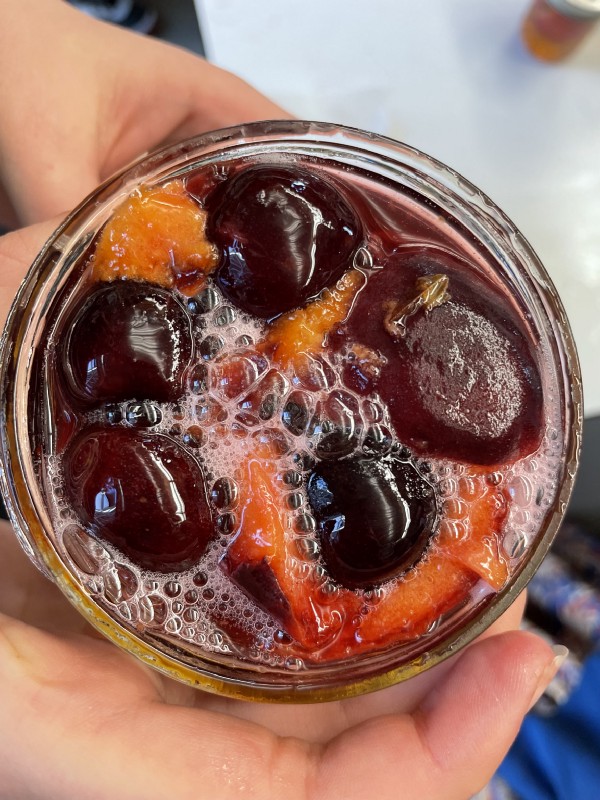
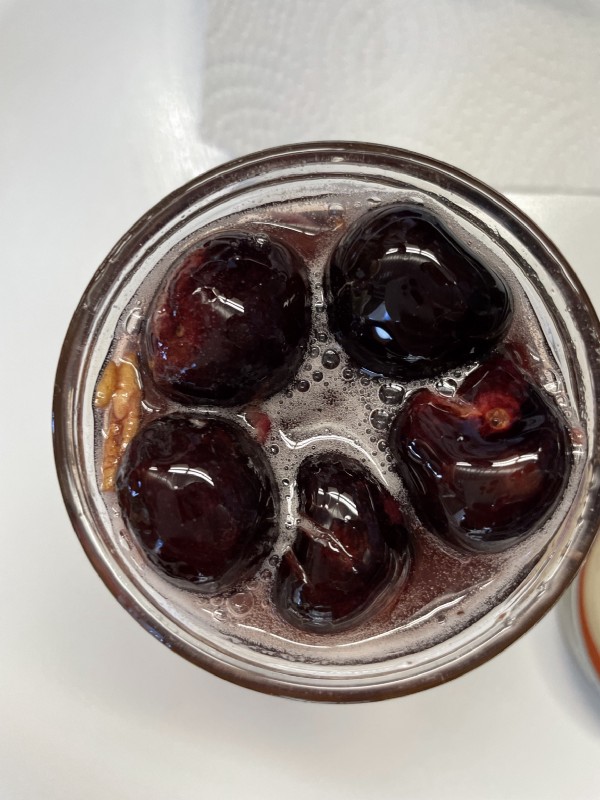
Day 5: Pulling it all together
The final day of the workshop we dialed in the giant drawing of the Plaza, and got ready to present the work to Robert Alexander González, Dean of the Architecture School, and some other visitors.
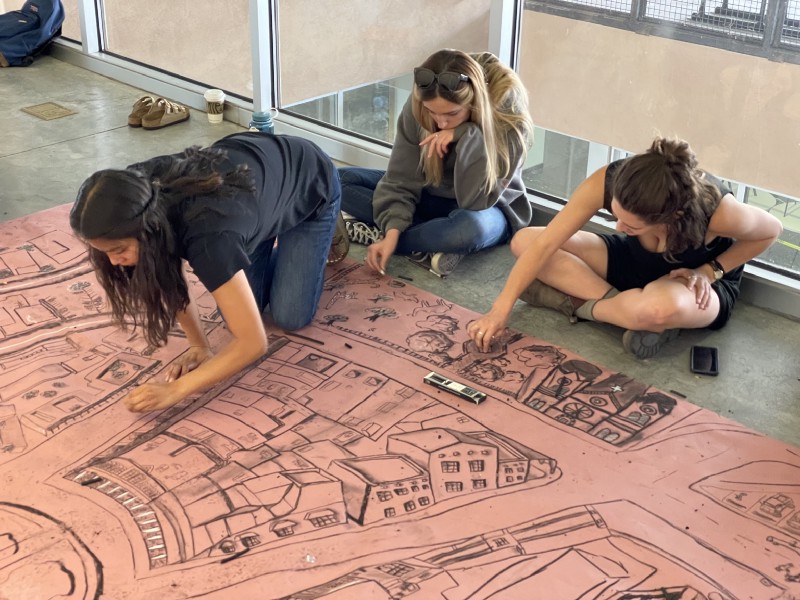

The students really leaned into the project, which sprawled in all directions and encompassed multiple perspectives and drawing styles. Groups of students moved around the drawing, with multiple passes happening and commonalities emerging with things like white charcoal for emphasis.
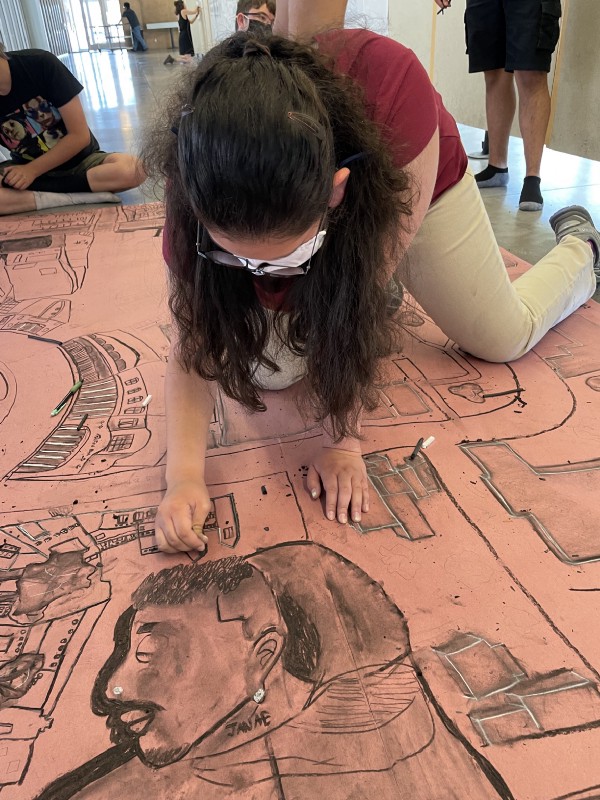
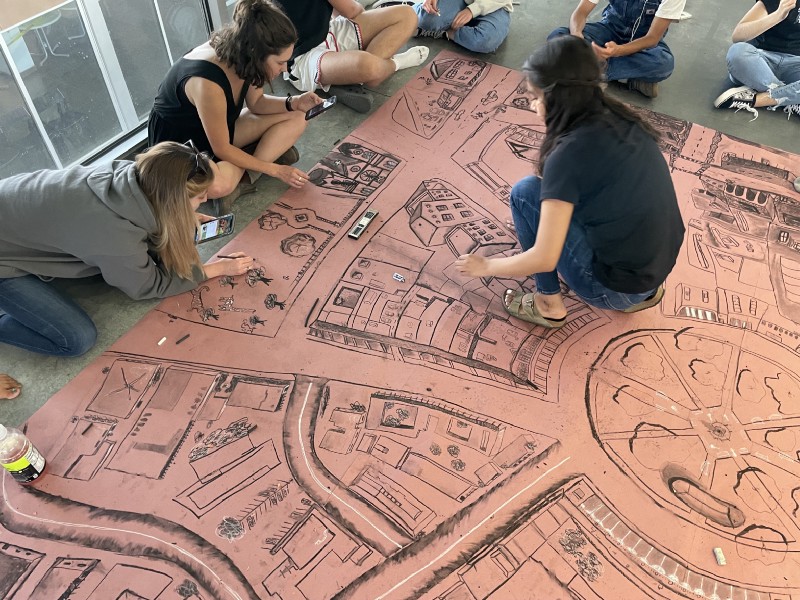
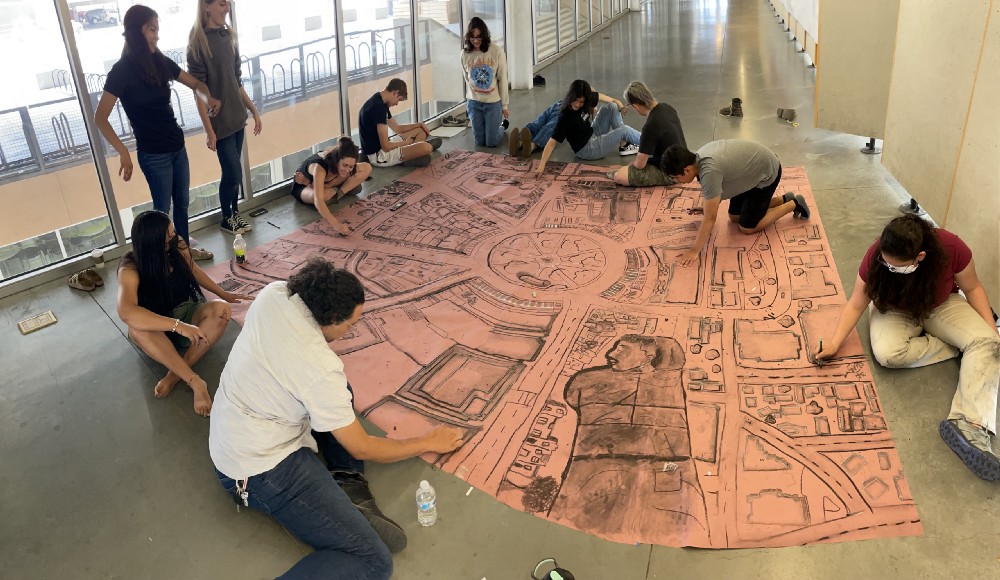
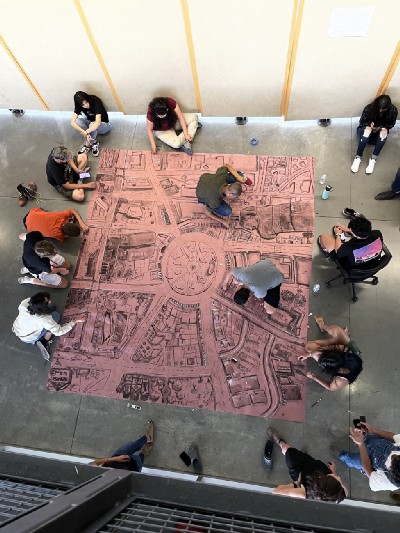
When our guests arrived, we were able to treat them to a double whammy of gigantic panoramic drawings of the Plaza, and also offer them yummy fermented treats, which is something I’d never done at an architecture crit before.
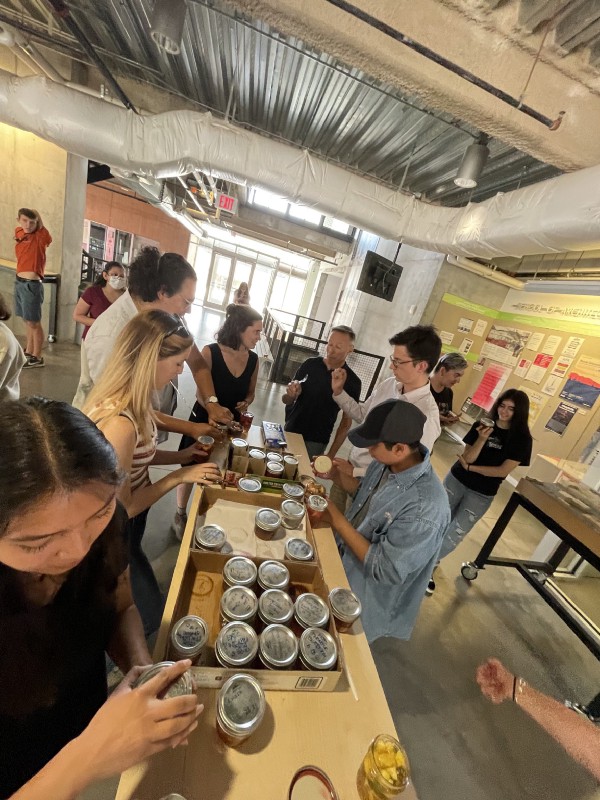
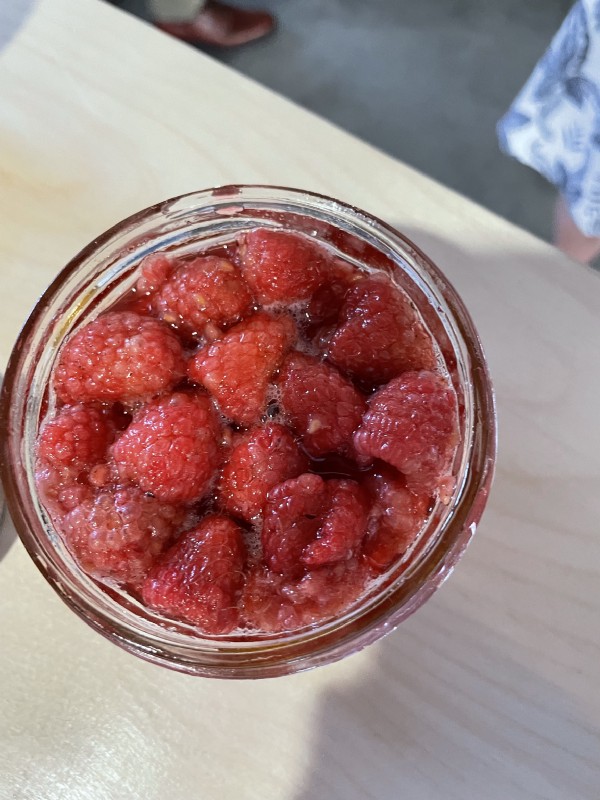
Overall, a super rewarding experience, and a chance to spend some time in beautiful New Mexico, a place that I’m rapidly falling in love with and want to spend more time (drop me a note if you have some ideas about how to make that happen, would you?). Thanks to Janet Abrams & Francisco Uvina and all the teaching assistants and amazing students for a singular experience!
